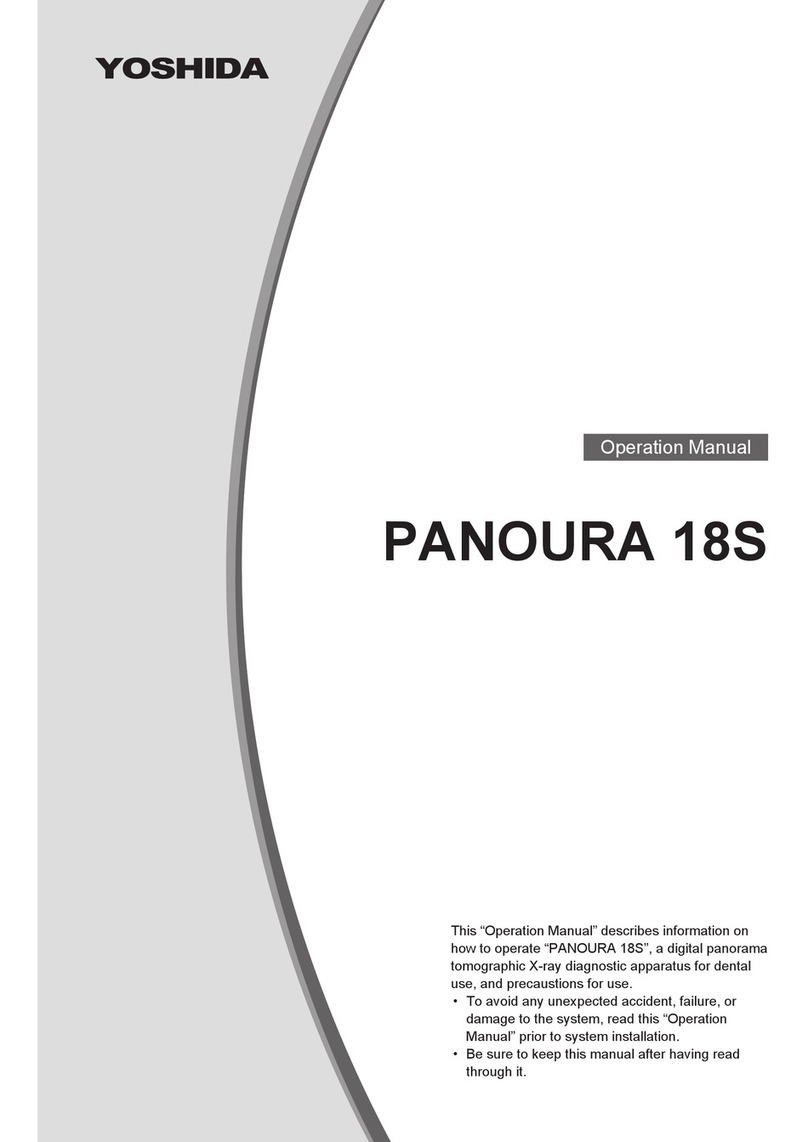
3
Operation Manual
1.7 Cooling Time ................................................................................................................. 50
1.8 Software ........................................................................................................................ 51
2 Directions for Use 52
2.1 Pre/post-operational Procedures .................................................................................. 52
2.2 Emergency Stop............................................................................................................ 53
2.3 Procedure of Panoramic and TMJ Radiography ........................................................... 54
2.3.1 Turning the power switch on ..............................................................................................54
2.3.2 Flow of Image Acquisition ..................................................................................................55
2.3.3 Setting the Exposure mode................................................................................................56
2.3.4 Seating the patient inside the equipment...........................................................................62
2.3.5 Patient Positioning in Panoramic mode .............................................................................65
2.3.6 Patient Positioning in TMJ mode .......................................................................................71
2.3.7 X-ray Exposure ..................................................................................................................74
2.3.8 Patient's Exit ......................................................................................................................77
2.3.9 Image Transfer...................................................................................................................77
2.3.10 Turning Off the Equipment.................................................................................................78
2.4 Procedures of Cephalometric and Carpus Radiography............................................... 79
2.4.1 Turning the power switch on ..............................................................................................79
2.4.2 Flow of Image Acquisition ..................................................................................................79
2.4.3 Setting the Exposure Mode................................................................................................79
2.4.4 Patient's entry and Positioning...........................................................................................80
2.4.5 X-Ray Exposure.................................................................................................................83
2.4.6 Patient’s Exit ......................................................................................................................85
2.4.7 Image Transfer...................................................................................................................85
2.4.8 Turning Off the Equipment.................................................................................................86
2.5 Procedure of 3D Radiography....................................................................................... 87
2.5.1 About 3D image acquisition ...............................................................................................87
2.5.2 Turning the power switch on ..............................................................................................90
2.5.3 Openingng the image formulating window of Image Creator.............................................90
2.5.4 Setting the Exposure Mode................................................................................................90
2.5.5 Seating and positioning the patient....................................................................................90
2.5.6 X-ray Exposure ................................................................................................................100
2.5.7 Patient's Exit ....................................................................................................................102
2.5.8 Detachingtheheadxatorfor3Dimageacquisition .......................................................102
2.5.9 Image Transfer.................................................................................................................102
2.5.10 Turning Off the Equipment...............................................................................................103




























